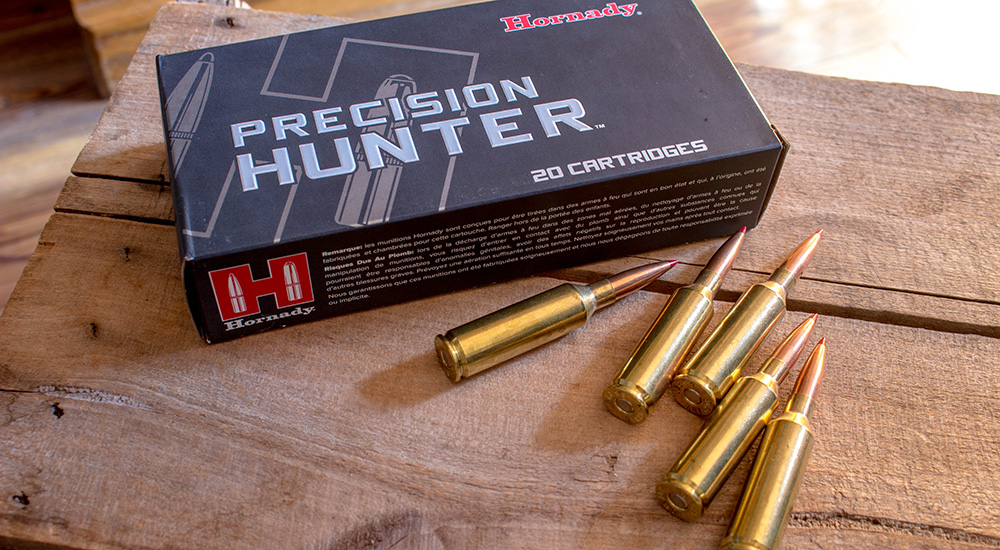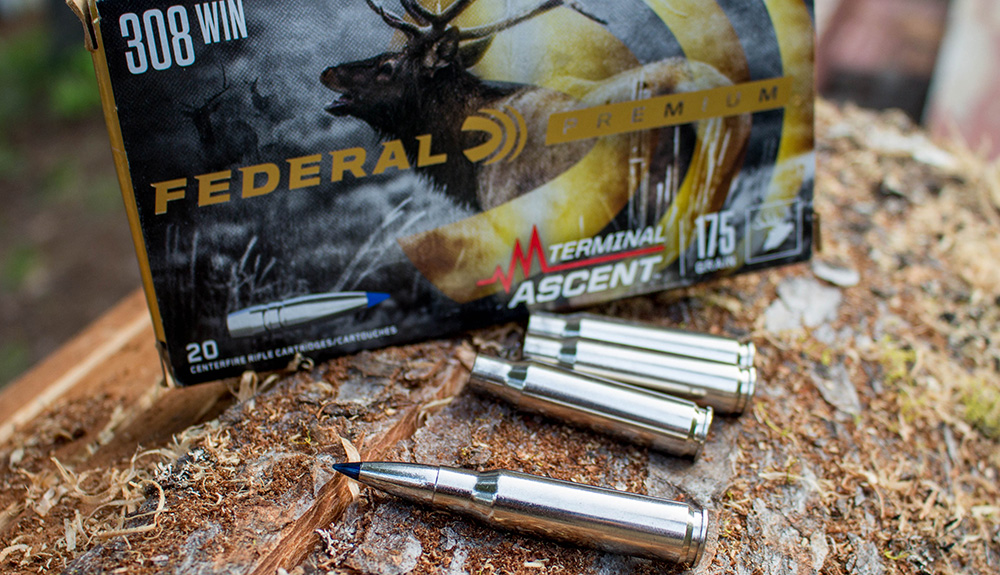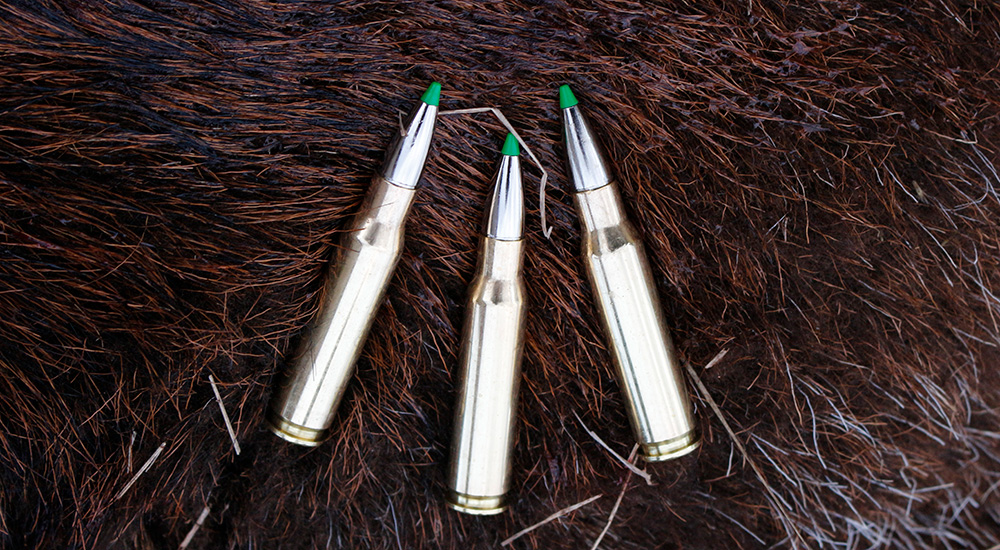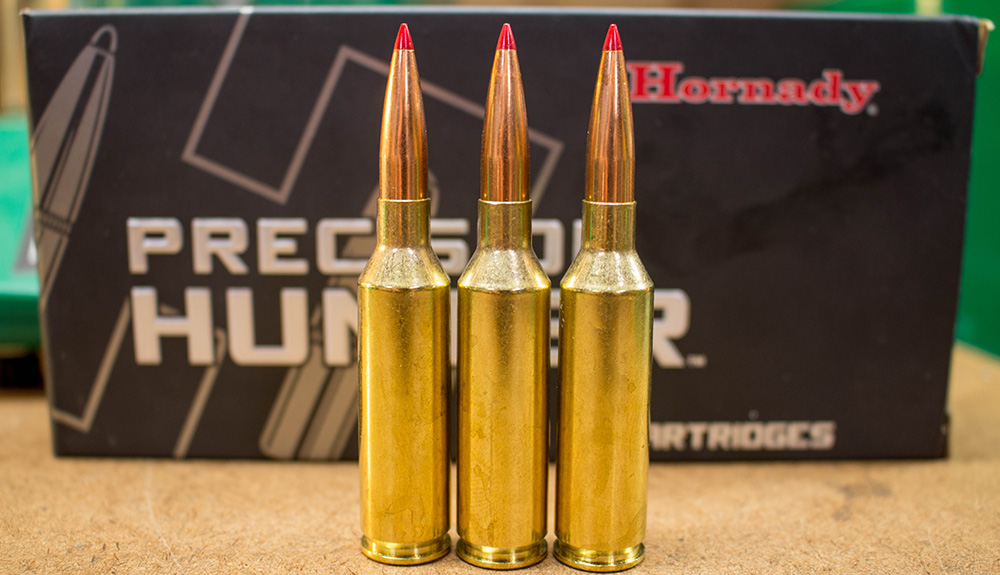By reader request, we’re putting two short-action gems up against one another, with a time-proven veteran with 70-plus years of hunting, military and target experience, and a relative newcomer that is quickly gaining favor in the hunting fields and target range. And despite the differences in bore diameter, many hunters are flocking to the smaller bullet diameter; the question is whether or not that change is warranted. Let’s compare the differences between Hornady’s 6.5 PRC and the classic .308 Winchester.

As the younger of the pair—having been released at the 2018 SHOT Show—the 6.5 PRC (Precision Rifle Cartridge) is often referred to as the big brother of the 6.5 Creedmoor. Based on the .375 Ruger, shortened to fit in a short-action magazine, the 6.5 PRC is a rimless cartridge, using its 30-degree shoulder for excellent headspacing and chamber concentricity. The case features the .532-inch-diameter case head common to the Holland & Holland family of cartridges, and measures 2.030 inches in length, with a cartridge maximum length of 2.955 inches. This leaves ample room outside the case mouth for those bullets which possess the high Ballistic Coefficient values, and make the best choices for shooting in high winds or at long distances. Like the Creedmoor, the vast majority of projectiles will top out at somewhere between 140 and 147 grains, with few exceptions.
The 6.5 PRC does offer a respectable velocity advantage over the Creedmoor—about 250-260 fps, putting it on par with the 6.5 Weatherby RPM, and ahead of factory ammo for the 6.5-284 Norma. Though it is short and squat—and visually reminiscent of the Winchester Short Magnum cartridges—I’ve found the 6.5 PRC feeds very well in any rifle with a decently designed feed ramp. At 2960 fps with a 143-grain Hornady ELD-X, the 6.5 PRC will throw those bullets in a very similar manner to the .300 Winchester Magnum with a good 180-grain bullet; when zeroed at 200 yards, it’ll print 6.4 inches low at 300 yards, 18.2 inches low at 400 yards, and 36.2 inches low at 500 yards (where it still retains over 1,600 ft.-lbs. of energy). In the recoil department, the 6.5 PRC does have a higher recoil level than does the 6.5 Creedmoor, but I’ve found it to be completely manageable.

The .308 Winchester came to light in the sporting world before it got its marching orders in the U.S. Army, being released in 1952. It is the result of the 1940s effort to reduce the size and weight of the cartridge, in order to maximize the soldier’s potential. Starting with the .300 Savage cartridge, the end result was what the military designated the T-65. Sharing the same case head dimension as the .30-06 Springfield (derived from the Mauser cartridges), the .308 Winchester effectively reproduced the Springfield’s performance – at least from a military perspective. The sporting world would cock an eyebrow, however, and that debate between the .308 and .30-06 rages on 70 years later. Like its forefathers, the 308 Winchester is rimless, with a .473”-diameter case head, and a 20-degree shoulder for headspacing. The case length is 2.015 inches, with a cartridge overall length of 2.810 inches; the resultant cartridge is one of the first to earn the moniker of “inherently accurate.”
With the 1:12-inch twist rate of the early sporting rifles, the .308 Winchester was limited to 200-grain bullets, though many were eventually offered with the faster 1:10-inch twist. As bullet technology improved, the need for 220-grain round nose definitely faded, but the argument is still raised that the Springfield handles heavy bullets better than does the .308 Winchester. I personally feel that bullets weighing between 150 and 180 grains make the best choice for big-game hunting, as with modern designs they are rugged enough to reach the vitals on game as large as moose and elk, yet don’t take up that precious real estate in the case. Many hunters feel the 165-grain bullets are the optimum balance of bullet weight and velocity in the .308 Winchester, and there is merit to that theory. Traveling at 2700 fps, the trajectory of the .308 Winchester isn’t as flat as the .300 Magnums, nor even the 6.5 PRC, but still makes a good choice for an all-around hunting rifle. With a common softpoint bullet, and a 200-yard zero, the 308 will print 8½ inches low at 300 yards, 25 inches low at 400 yards and 50 inches low at 500 yards, retaining over 1,100 ft.-lbs. of energy at the latter distance. And while these numbers may seem anemic when compared to some of the modern cartridge designs, remember that the .308 Winchester was once the undisputed darling of the long-range target crowd.

Grab a box of premium 180-grain ammunition for the .308 Winchester and you’ve got moose and elk medicine, as well as making a great choice for black bear anywhere. If you like to use your big-game rifle for the occasional coyote, the 125-grain bullets can be very effective, if a bit rough on the pelts.
With all this is mind, which makes the better choice for the hunter? A couple of factors should help dictate your choice of purchase: first, the choice of species to be pursued, and second, the ranges at which you hunt and your style of hunting. With the flexibility of bullet weight that .30-caliber has to offer, the .308 Winchester is, was, and always shall be a very versatile cartridge. At the most common hunting ranges, its trajectory and energy levels don’t pose an issue, and I feel that for the larger species the .308 Winchester offers an obvious advantage over and of the 6.5mms. Should you want your hunting cartridge to pull double duty as a competition target cartridge, especially at long ranges, the 6.5 PRC is a fine choice. Many feel that the 140- to 147-grain bullets are plenty of bullet weight for bears, elk and moose, though the author feels that a larger bore diameter and additional bullet weight will be greatly appreciated for those species. As a deer/sheep/antelope cartridge, the 6.5 PRC is a wonderful choice, and it is in that species range where I feel the cartridge absolutely shines.

Factory ammunition for the .308 Winchester is wonderfully plentiful, with all major manufacturers offering good choices. The 6.5 PRC has assuredly caught on, with at least one load offered by Winchester, Browning, Federal, Nosler, Norma and Barnes, as well as the Hornady offerings. To pick one over the other, I’m going to fall back on my inherent desire for flexibility, and that means I’ll have to choose the .308 Winchester for the wider variety of bullet weight, even if I’m giving up the hunting performance outside of 500 yards. There is a reason that the .30-caliber cartridges remain such popular choices in the hunting arena, and while the 6.5mms are certainly impressive far downrange, the majority of hunting certainly occurs inside of 400 yards.
Looking for previous installments of our “Head to Head” series? Click here.











































